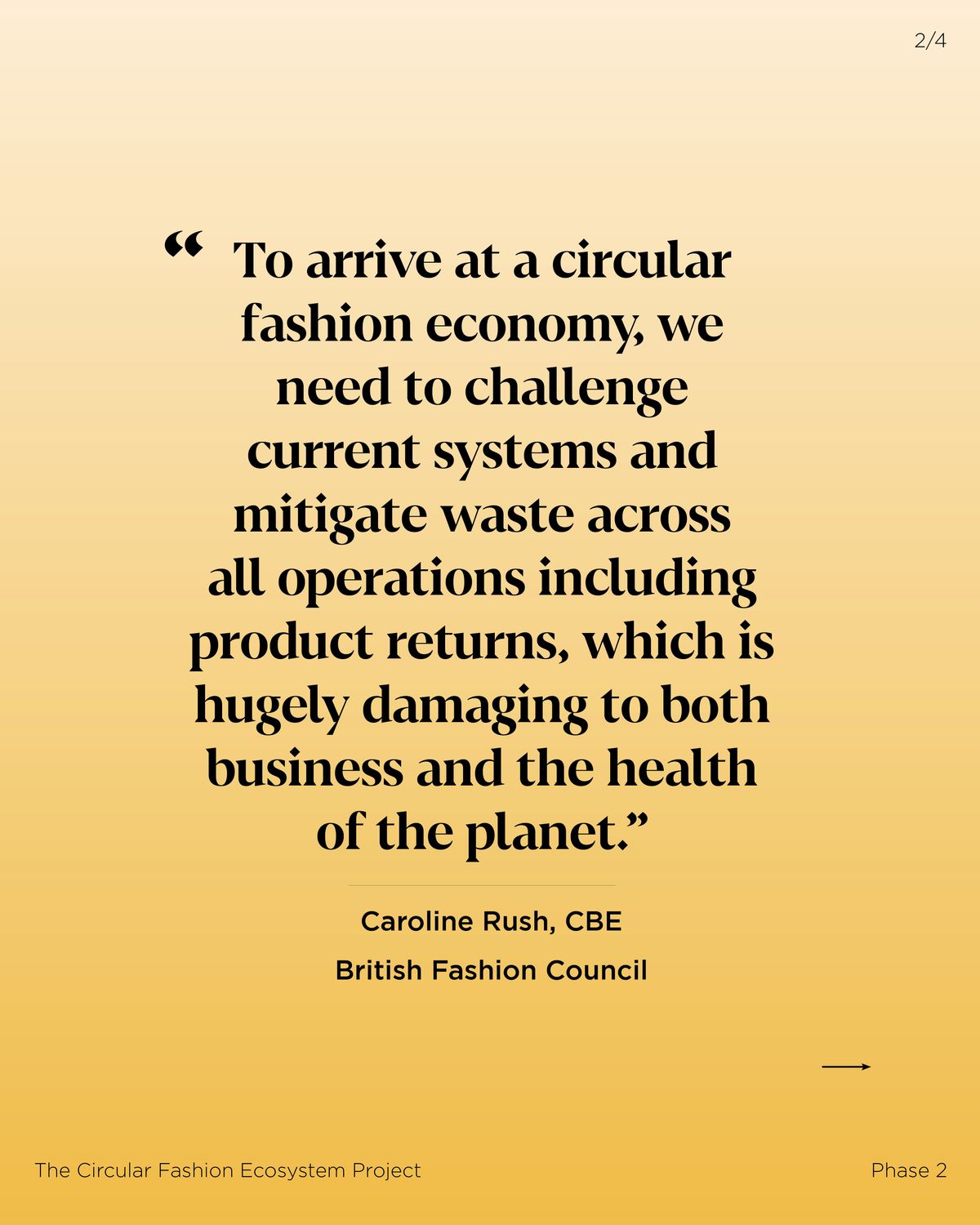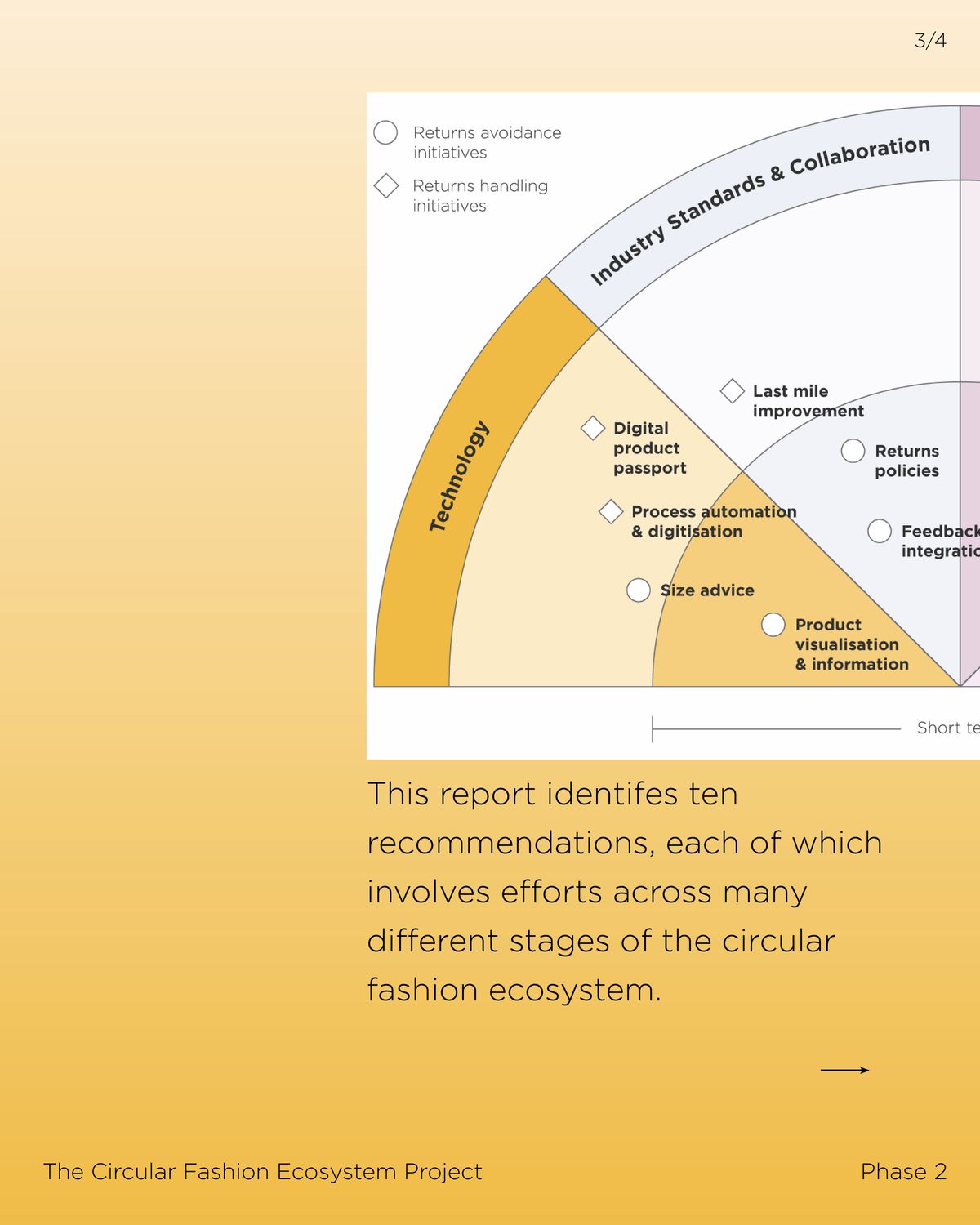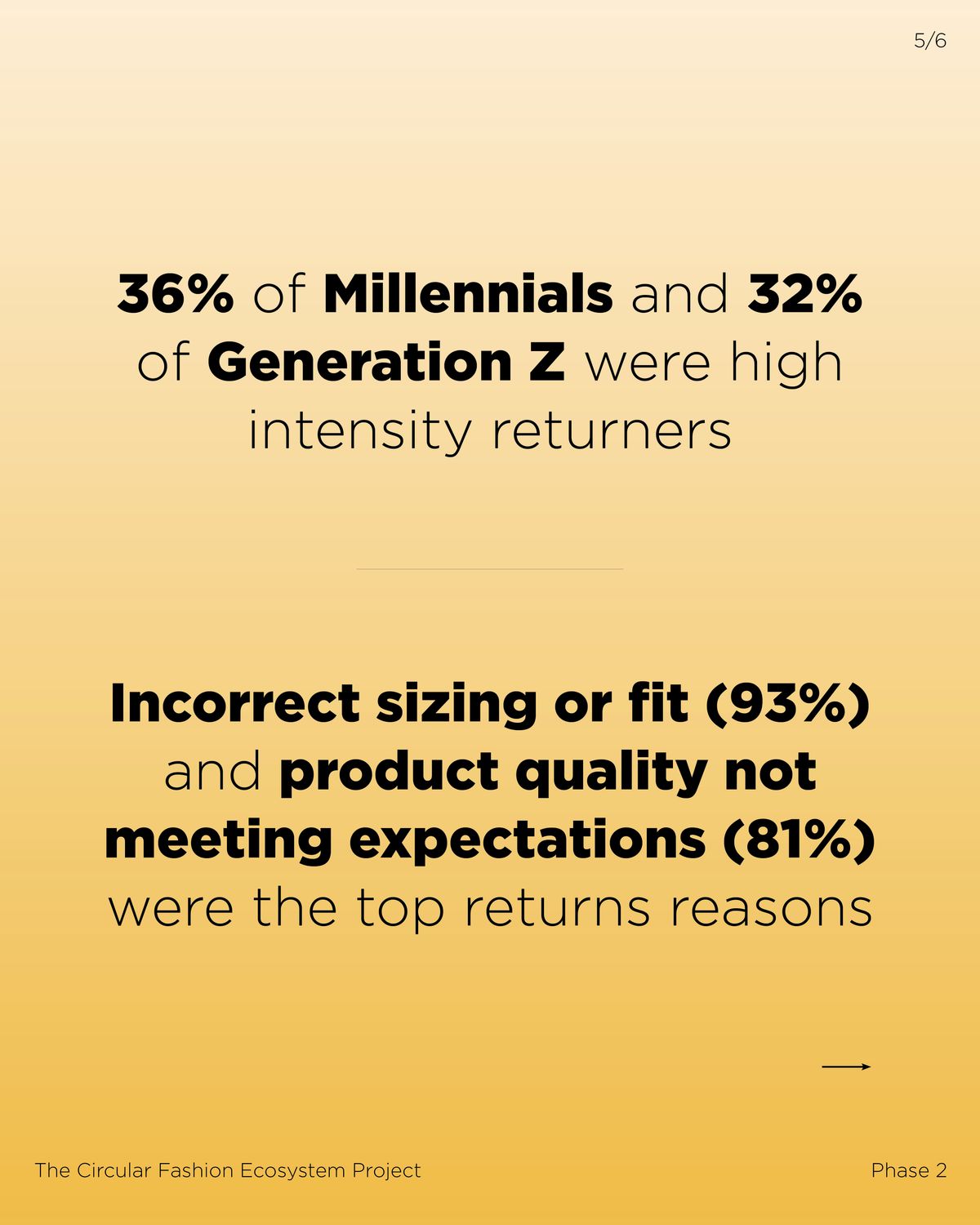Solving fashion's product returns
Circular Fashion Ecosystem Project Phase 2 – delivered by DHL

Findings from Phase 2 of the Circular Fashion Ecosystem project focuses on creating a roadmap for change by first discussing the issue of fashion returns, which is a very critical challenge impacting the sustainability of the industry.
“To arrive at a circular fashion economy, we need to challenge current systems and mitigate waste across all operations including product returns, which is hugely damaging to both business and the health of the planet”, Caroline Rush CBE, Chief Executive, British Fashion Council, says.
“For our first Circular Fashion Ecosystem Phase 2 Project, we investigated the reasons behind returns and explored features and policies that would reduce their need and associated impact. The research led us to two target outcomes which when combined, create a target state where the fashion industry can be held accountable for our products and enable a more responsible future.”
Target state: Minimised returns
Target outcome 1
Product returns are mitigated at the point of sale
Reduce the potential for product returns
Each garment returned has a significant environmental footprint due to reverse logistics emissions and potential wastage if it cannot be resold. The most effective way for the industry to reduce returns is for retailers and brands to leverage data and digital solutions to capture insights on what drives returns, and integrate them into a closed feedback loop to mitigate issues causing returns before they occur.
Target outcome 2
Product returns are handled more efficiently
Optimise the reverse logistics and operations process for efficiency and sustainability
Reverse logistics currently consists of multiple steps, many of which, such as transportation and warehousing, are environmentally damaging and costly. The key to ensuring that reverse logistics are made more sustainable is to invest into the right technologies and processes (e.g., EV trucks, automated warehousing etc.), so that businesses can make operations more efficient, cost-effective, less carbon intensive and more sustainable.
Conclusion
"To create a starting point, this report has come up with recommendations across priority action areas spanning from short, mid and long term time frames. These recommendations drive change across multiple dimensions of the returns process and clearly set out the initiatives different stakeholders should explore."






